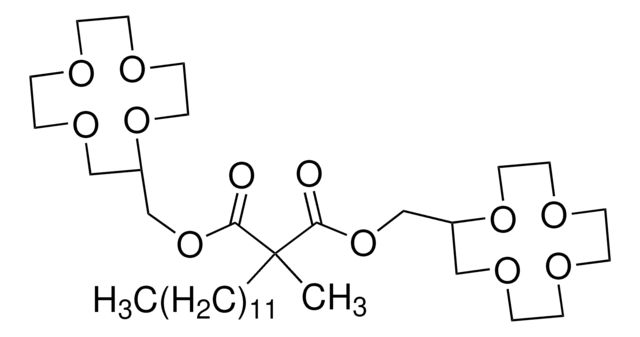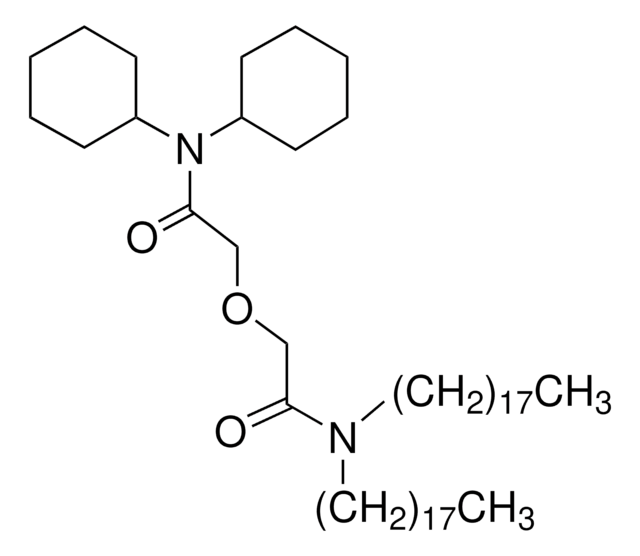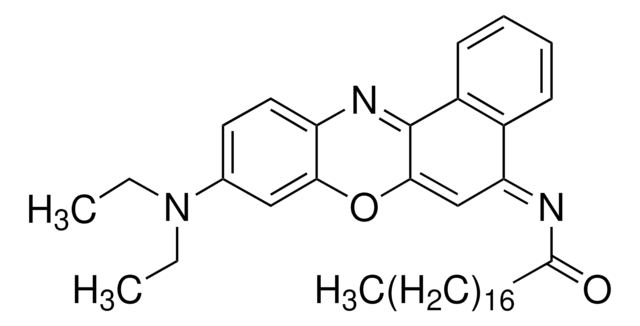71745
Sodium ionophore IV
Selectophore™, function tested
Synonym(s):
2,3:11,12-Didecalino-16-crown-5, 2,6,13,16,19-Pentaoxapentacyclo[18.4.4.47,12.01,20.07,12]dotriacontane, DD-16-C-5
About This Item
Recommended Products
grade
for ion-selective electrodes
Quality Level
100
200
product line
Selectophore™
form
powder
quality
function tested
storage temp.
2-8°C
SMILES string
C1COC23CCCCC2(CCCC3)OCCOCCOC45CCCCC4(CCCC5)OC1
InChI
1S/C27H46O5/c1-5-14-26-15-6-2-11-24(26,10-1)29-18-9-19-30-25-12-3-7-16-27(25,17-8-4-13-25)32-23-21-28-20-22-31-26/h1-23H2/t24-,25-,26+,27+
InChI key
ISSCXMQDZJDLSO-PVCJUVKBSA-N
Related Categories
General description
Application
Packaging
Other Notes
Legal Information
related product
Storage Class Code
11 - Combustible Solids
WGK
WGK 3
Flash Point(F)
Not applicable
Flash Point(C)
Not applicable
Personal Protective Equipment
Choose from one of the most recent versions:
Already Own This Product?
Find documentation for the products that you have recently purchased in the Document Library.
Our team of scientists has experience in all areas of research including Life Science, Material Science, Chemical Synthesis, Chromatography, Analytical and many others.
Contact Technical Service




![Sodium tetrakis[3,5-bis(trifluoromethyl)phenyl]borate Selectophore™](/deepweb/assets/sigmaaldrich/product/structures/251/439/7a621e74-bfd1-4a43-833c-09adfcc1e0b3/640/7a621e74-bfd1-4a43-833c-09adfcc1e0b3.png)



